Kingdom Fungi Class Homobasidiomycetae Order Agaricales Scientific name Amanita frostiana | Division Basidiomycota Subclass Hymenomycetes Rank Species | |
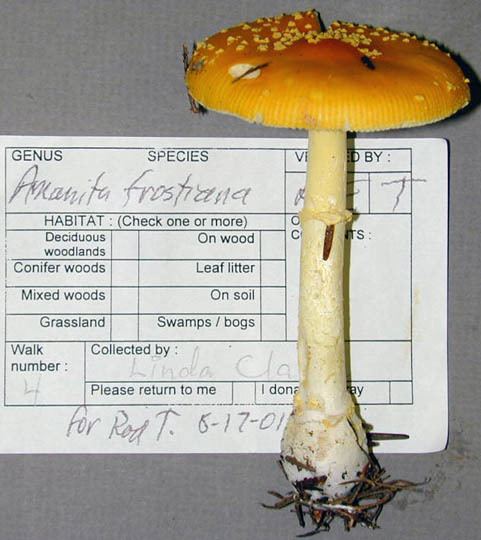 | ||
Similar Amanita albocreata, Amanita flavoconia, Amanita farinosa, Amanita magnivelaris, Amanita wellsii | ||
Amanita frostiana, also known as Frost's Amanita, is a small fungi species of eastern U.S. and southeastern Canada. The mushroom varies in colours from yellow, red or reddish pink usually.
Contents

Description
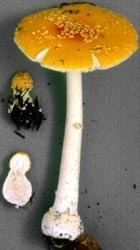
Some of the species' notable physical characteristics, however, distinguish it from the other members of the genus. For instance, the colors of the cap, darkening over the disk and the universal veil colored yellow to cream. The other characteristics of the other parts of its body are as follows:
Distribution and habitat
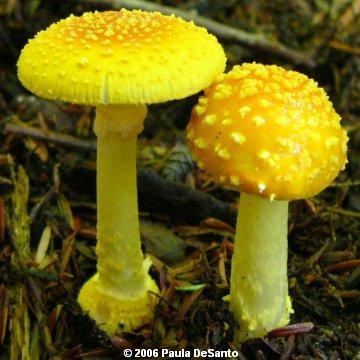
This rare species is normally found in mixed forests with oaks (mostly Quercus oaks) and conifers (mostly Pinaceae conifers). It is considered native to eastern U.S. and southeastern Canada.
Similar species
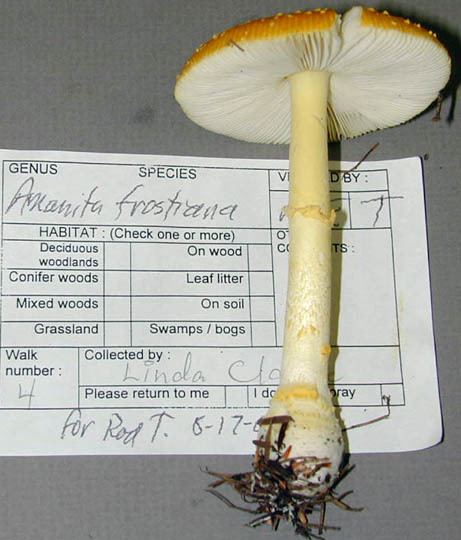
Amanita frostinata is similar to a range of species, like Amanita rubrovolvata, Amanita flavoconia, Amanita albocreata, Amanita muscaria var. muscaria or simply Amanita muscaria and Amanita subfrostiana.
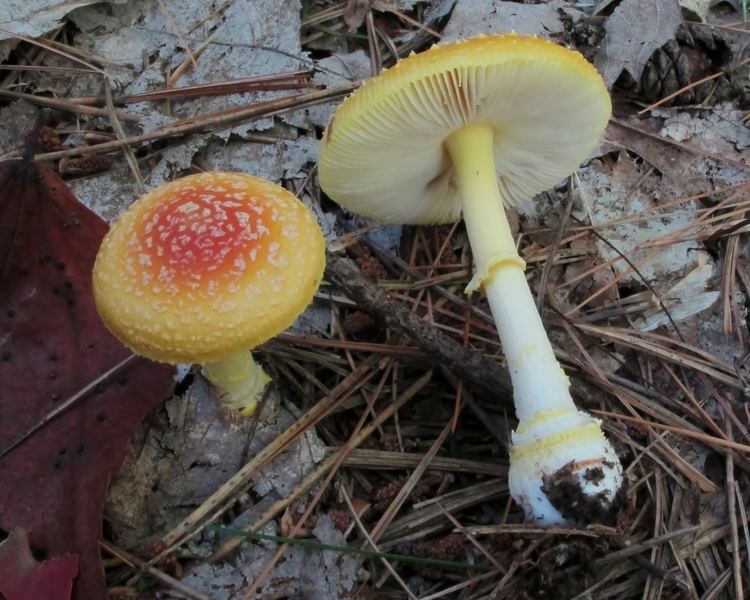
Amanita rubrovolvata is slightly similar physically to this species. The fungus produces small- to medium-sized mushrooms, with reddish-orange caps. Roger Heim reported A. frostiana as occurring in Thailand, but this was probably a misidentification of A. rubrovolvata.
Amanita subfrostiana, also referred to as 'False Frost's Amanita', has the same natural habitat as of A. frostiana, but is mostly distributed in southwestern China. It does resemble A. frostiana but due to the different paleness of color in the cap of this species helps avoid misidentification.
The distinct and starkly white bulb (e.g., 17 x 15 mm) bears a white or yellow-white collar that is somewhat similar to the collar seen in the exannulate Amanita albocreata, which is a species of the hardwood-hemlock (Tsuga) forest of the northeastern U.S. and southeastern Canada and of boreal forest at least as far north as the Island of Newfoundland.
The clamps present at bases of basidia of this species specially support the presumed relationship to Amanita muscaria var. muscaria or simply Amanita muscaria. Amanita muscaria is a poisonous and psychoactive basidiomycete fungus, one of many in the genus Amanita.
Many misidentifications have taken place while recognizing Amanita flavoconia, one of the most common and widespread species of Amanita in eastern North America, due to various similar physical characteristics. It is mostly confused due to their microscopic features.
Edibility
The edibility of this species is still doubted. It is considered poisonous and it is chancy to term it edible. High caution must be taken until the edibility of this species is clarified.
